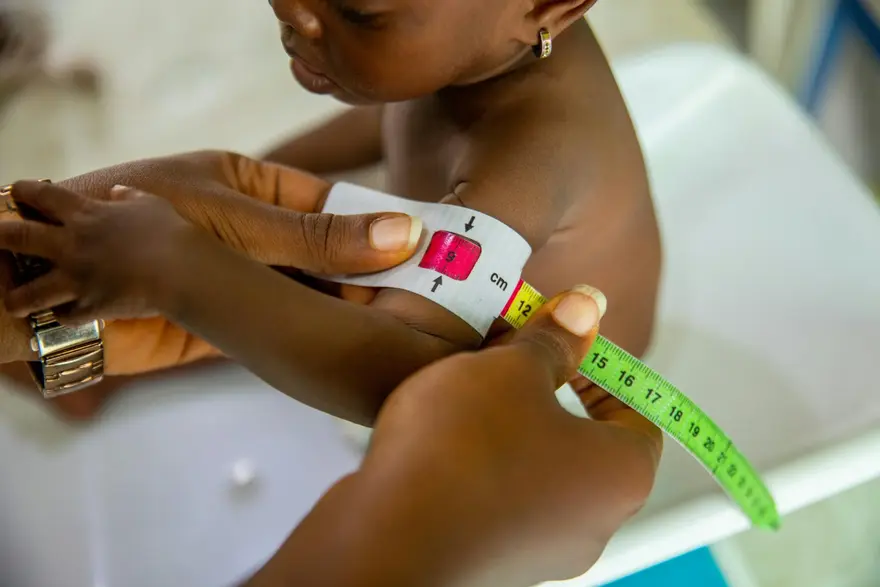Preventive Healthcare
Omphalocele: Diagnosis and Treatment of This Congenital Abdominal Defect
439 Views
0

What is an omphalocele?
An omphalocele is a birth defect in which a baby’s abdominal wall does not fully close during early foetal development. This results in an opening near the umbilical cord, allowing abdominal organs like the intestines, liver, and sometimes other organs to extend outside the belly in a transparent sac.
Omphalocele symptoms can include the visible protrusion of organs, and in severe cases, breathing difficulties or feeding issues after birth. The severity of an omphalocele can vary, from a small hernia involving only part of the intestine to a larger defect containing multiple organs. Omphalocele treatment depends on the size and organs involved; it may include surgery soon after birth or a staged approach to safely return the organs to the abdomen.
What are the types of omphalocele?
Omphalocele types are classified based on their size and the organs involved:
- Small omphalocele: Contains only a part of the small intestine
- Large omphalocele: Involves the intestines along with a portion of the liver
- Giant omphalocele: A defect larger than 5 cm, with most of the liver and other organs protruding
The type and size of omphalocele impact the complexity of treatment required after birth.
How common is omphalocele?
Omphalocele is a rare condition, occurring in about 1 in every 5,000 to 10,000 live births. While that may seem like a small number, for the families affected, the impact is profound. Specialised foetal treatment centres may see 30-50 cases per year, highlighting the importance of expert care for this uncommon defect.
Why do babies get omphalocele?
The exact omphalocele causes are not fully understood, but it's thought to result from a disruption in the normal folding process that brings the abdominal walls together between the 6th and 10th week of foetal development. Some cases are associated with chromosomal abnormalities or genetic syndromes like Beckwith-Wiedemann syndrome. However, in many instances, no specific cause can be identified. It's important to remember that an omphalocele is not caused by anything the mother did or didn't do during pregnancy.
What are the risk factors for omphalocele?
Certain factors may increase the likelihood of a baby developing an omphalocele:
- Chromosomal disorders or genetic syndromes
- Family history of abdominal wall defects (though recurrence is rare)
- Elevated maternal serum alpha-fetoprotein (MSAFP) levels
However, most cases occur without any known risk factors. Your doctor can help assess your baby's individual situation.
What are the complications of omphalocele?
Babies with an omphalocele may face additional challenges, including:
- Underdeveloped lungs and breathing difficulties
- Feeding problems due to abnormal intestinal function
- Increased risk of infection if the protective sac ruptures
- Associated abnormalities in the heart, spine, digestive tract, or other organs
Careful monitoring and prompt treatment can help manage these potential complications.
How is omphalocele diagnosed?
An omphalocele is usually first detected during a routine prenatal ultrasound, most commonly in the second trimester around 20 weeks. If an abnormality is suspected, your doctor may recommend further tests:
- Detailed foetal ultrasound to better visualize the defect
- Foetal MRI for a more in-depth view of your baby's organs
- Foetal echocardiogram to check the heart's structure and function
- Amniocentesis to screen for chromosomal disorders or genetic syndromes
Early diagnosis allows time to plan for your baby's care and delivery with a specialised team.
What tests will be done to diagnose omphalocele?
To diagnose omphalocele and understand its severity, your medical team may recommend several tests to gather detailed information.
- Early in pregnancy, a high-resolution foetal ultrasound often detects omphalocele, helping assess its size and content.
- For further clarity, a foetal MRI may be performed to examine the organs within the omphalocele sac, providing a comprehensive view of its structure.
- Additionally, a foetal echocardiogram is used to detect any associated heart abnormalities, as certain heart defects are common with omphalocele cases.
- Amniocentesis may also be done to check for genetic anomalies often linked to omphalocele causes.
- After birth, abdominal X-rays and ultrasounds help evaluate the intestines and other organs more closely.
Understanding the omphalocele types and severity helps your healthcare team plan the most effective treatment approach and ensure your baby’s medical needs are met from birth onward.
How is an omphalocele treated?
Omphalocele treatment focuses on safely returning the protruding organs to the abdominal cavity and closing the defect while managing any related complications. The approach depends on the size of the omphalocele and your baby's overall health.
Treating a small omphalocele
For a small omphalocele, surgery may be done shortly after birth to place the organs back inside the abdomen and close the opening in one procedure, called a primary repair. Your baby will receive pain relief and be closely monitored during recovery.
Treating a giant omphalocele
With a large or giant omphalocele, a staged approach is often used. The exposed organs are initially covered with a special protective pouch called a silo, which is gradually tightened to ease the organs back into the abdomen over days or weeks. Once the organs are inside, the pouch is removed and the abdominal wall is closed surgically. This slower process allows the abdomen to expand to accommodate the returning organs.
Will our baby eat after surgery?
It may take some time for your baby's intestines to start working normally after omphalocele repair surgery. In the meantime:
- Nutrients will be given intravenously
- You can pump breast milk to be ready when your baby begins feeding
- A feeding tube may be used temporarily until your baby can feed by mouth
Are there activity restrictions after surgery?
Yes, your baby will need special care and close monitoring after omphalocele surgery:
- They will stay in the neonatal intensive care unit (NICU) for days to months, depending on their condition
- Assisted breathing support may be necessary as the lungs expand into the abdominal space
- Pain medications and antibiotics will help keep your baby comfortable and prevent infection
- You'll be able to hold your baby once they're stable, with guidance from the care team
Can omphalocele be prevented?
Currently, there's no known way to prevent an omphalocele from occurring. However, taking certain steps before and during pregnancy may support your baby's healthy development:
- Consume 400 mcg of folic acid daily to reduce the risk of birth defects
- Maintain a nutritious diet and healthy weight
- Avoid smoking, alcohol, and recreational drugs
- Attend regular prenatal checkups to monitor your baby's growth and well-being
What's the outlook for babies with omphaloceles?
With advances in medical and surgical care, the outlook for babies with omphaloceles has greatly improved. Survival rates are high, particularly for isolated omphaloceles without other major abnormalities. Long-term outcomes depend on factors like:
- The size and contents of the omphalocele
- Associated congenital abnormalities
- Lung development and breathing function
- Feeding and digestion issues
- Overall health and response to treatment
What is the life expectancy of a baby with an omphalocele?
Most babies with an isolated omphalocele who receive timely treatment go on to lead normal, healthy lives. However, those with very large defects or additional congenital anomalies may face more challenges and potential complications that impact long-term outcomes.
How do I deliver a baby with an omphalocele?
If your baby has an omphalocele, you'll likely deliver via a planned cesarean section to avoid rupturing the protective sac during contractions and vaginal birth. Your medical team will recommend the best timing for delivery based on your baby's growth and condition.
When to see a doctor?
If you have any concerns about your baby's development during pregnancy, don't hesitate to contact your obstetrician or midwife. They can perform tests to check for any abnormalities and refer you to a maternal-fetal medicine specialist if needed. If an omphalocele is suspected or diagnosed, you'll work with a multidisciplinary team to plan for your baby's birth and treatment.
Conclusion
Learning that your unborn baby has an omphalocele can feel overwhelming, but know that you're not alone. Remember, no question or concern is too small – your medical team is there to guide you every step of the way.
At Metropolis Healthcare, we understand the importance of reliable diagnostic information when it comes to your baby's well-being. With a nationwide network of labs and skilled technicians who can come right to your home to collect samples, we're here to support you and your baby's health needs every step of the way. Remember, with the right knowledge, care, and support, you can give your baby the best possible start in life.























 WhatsApp
WhatsApp